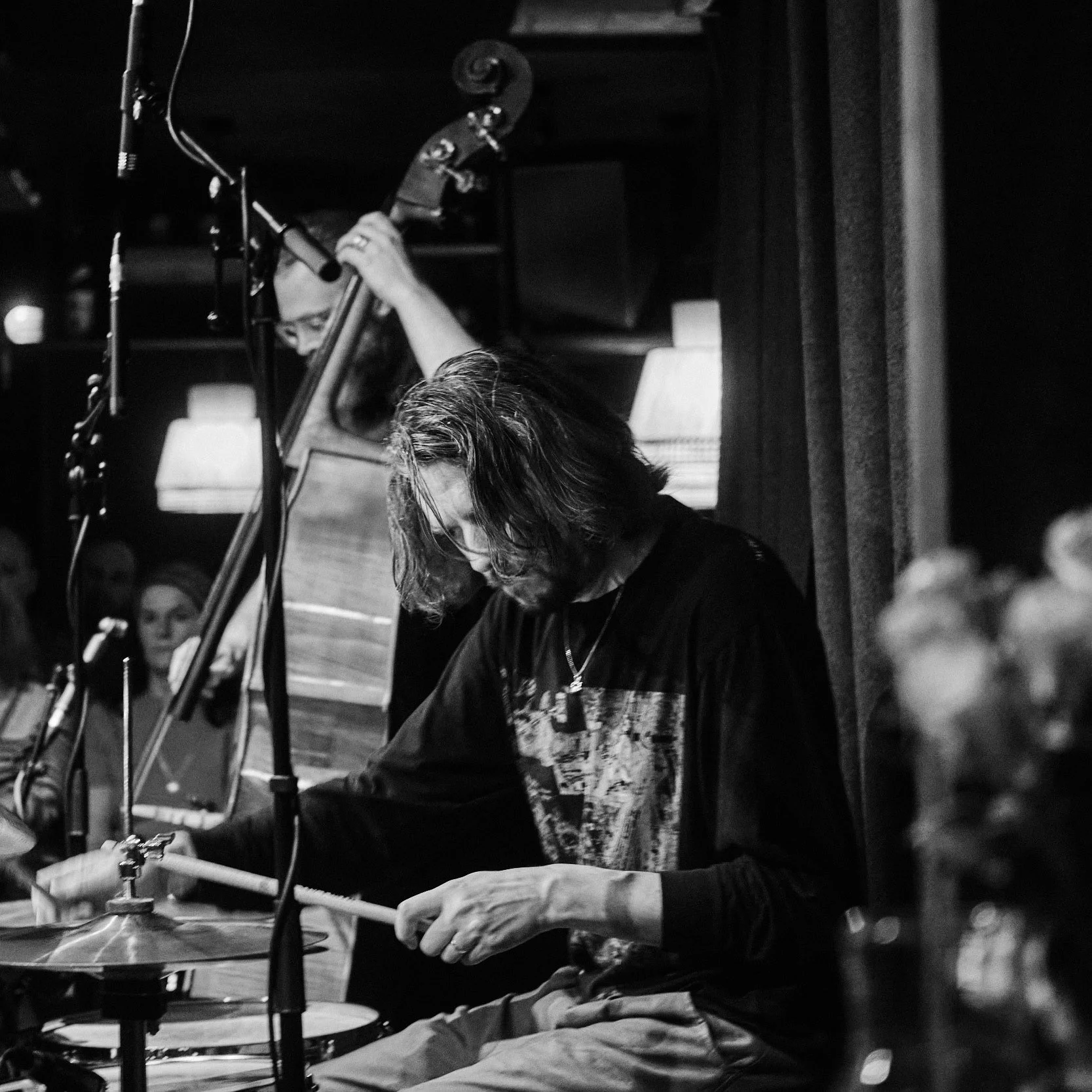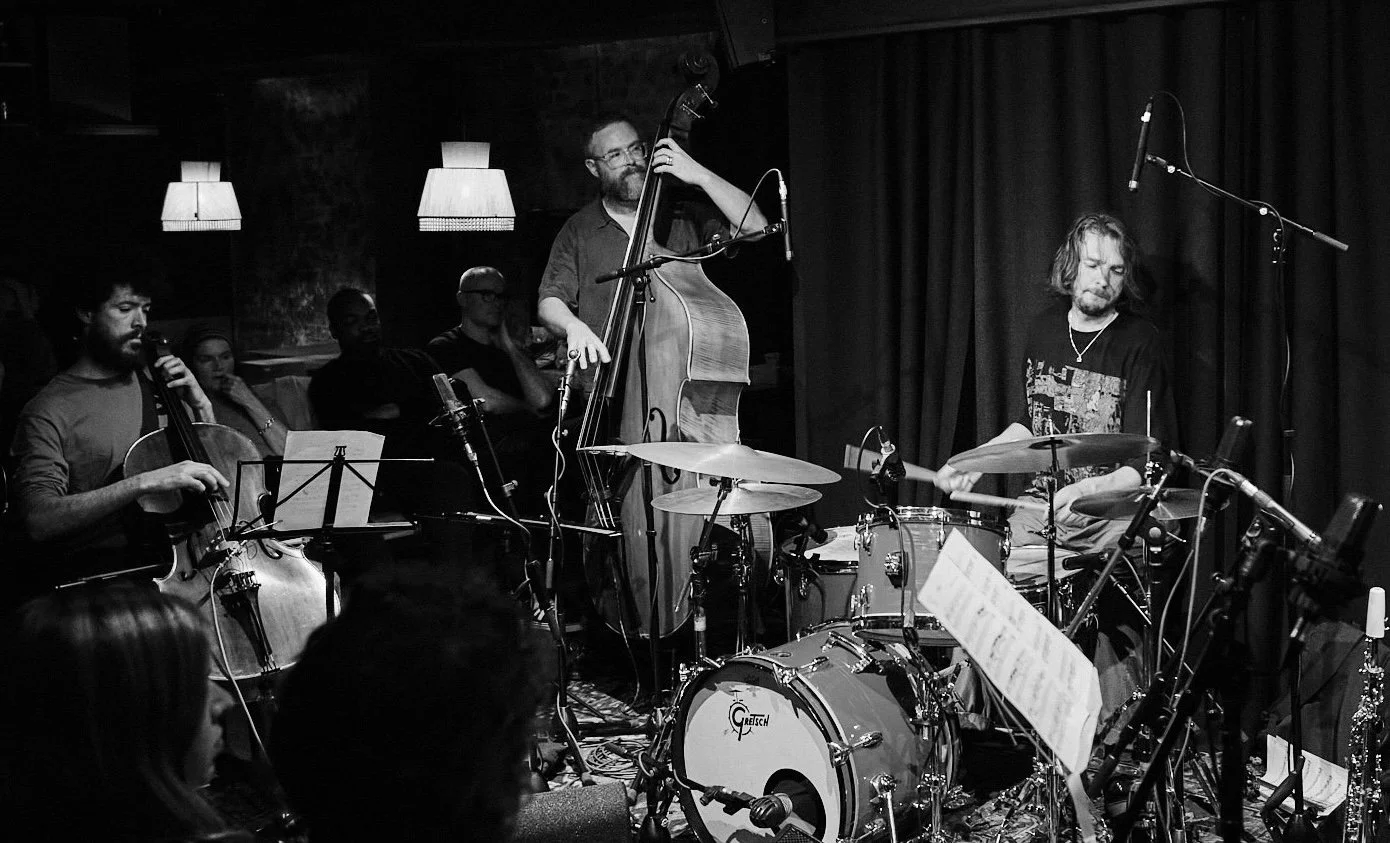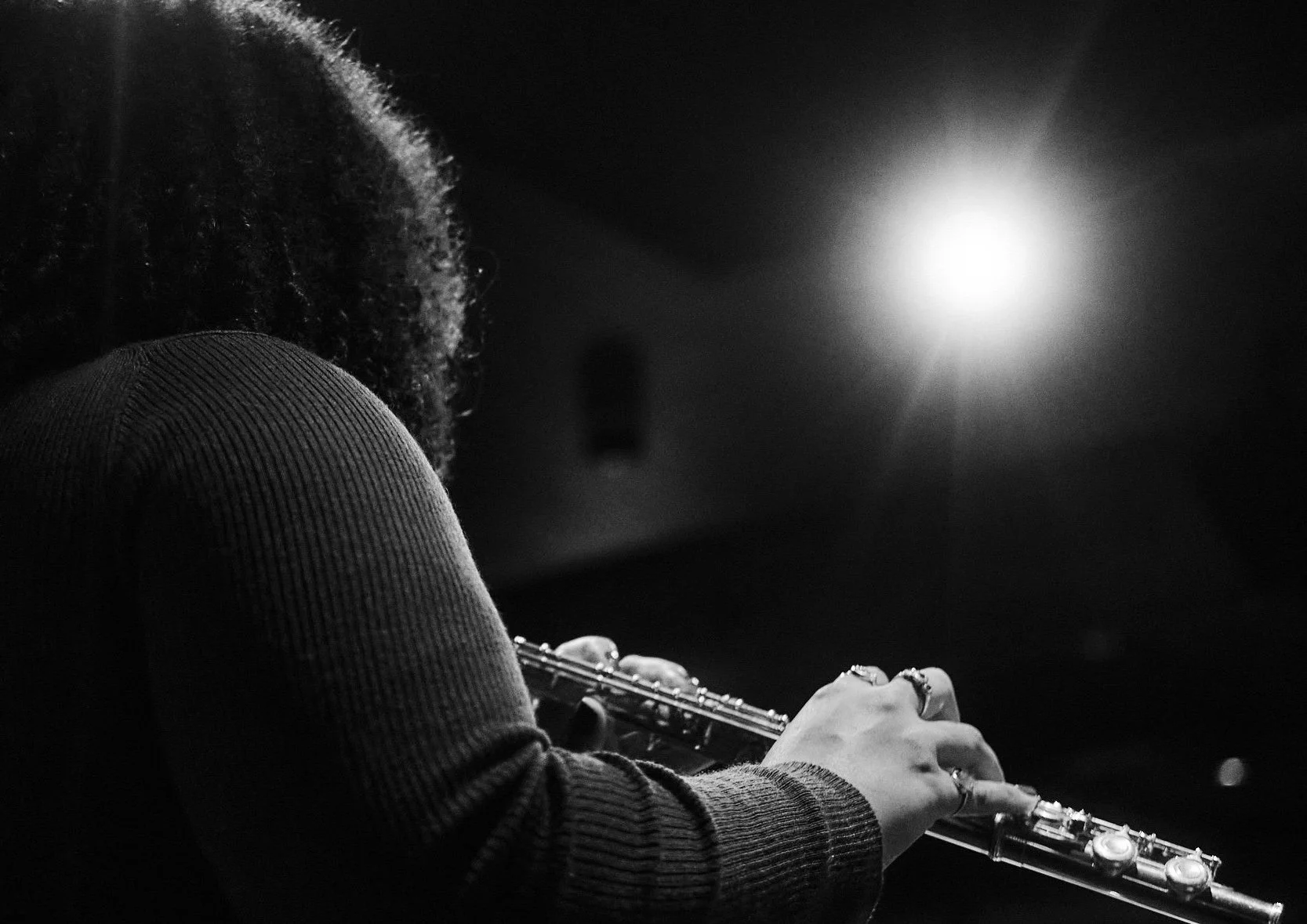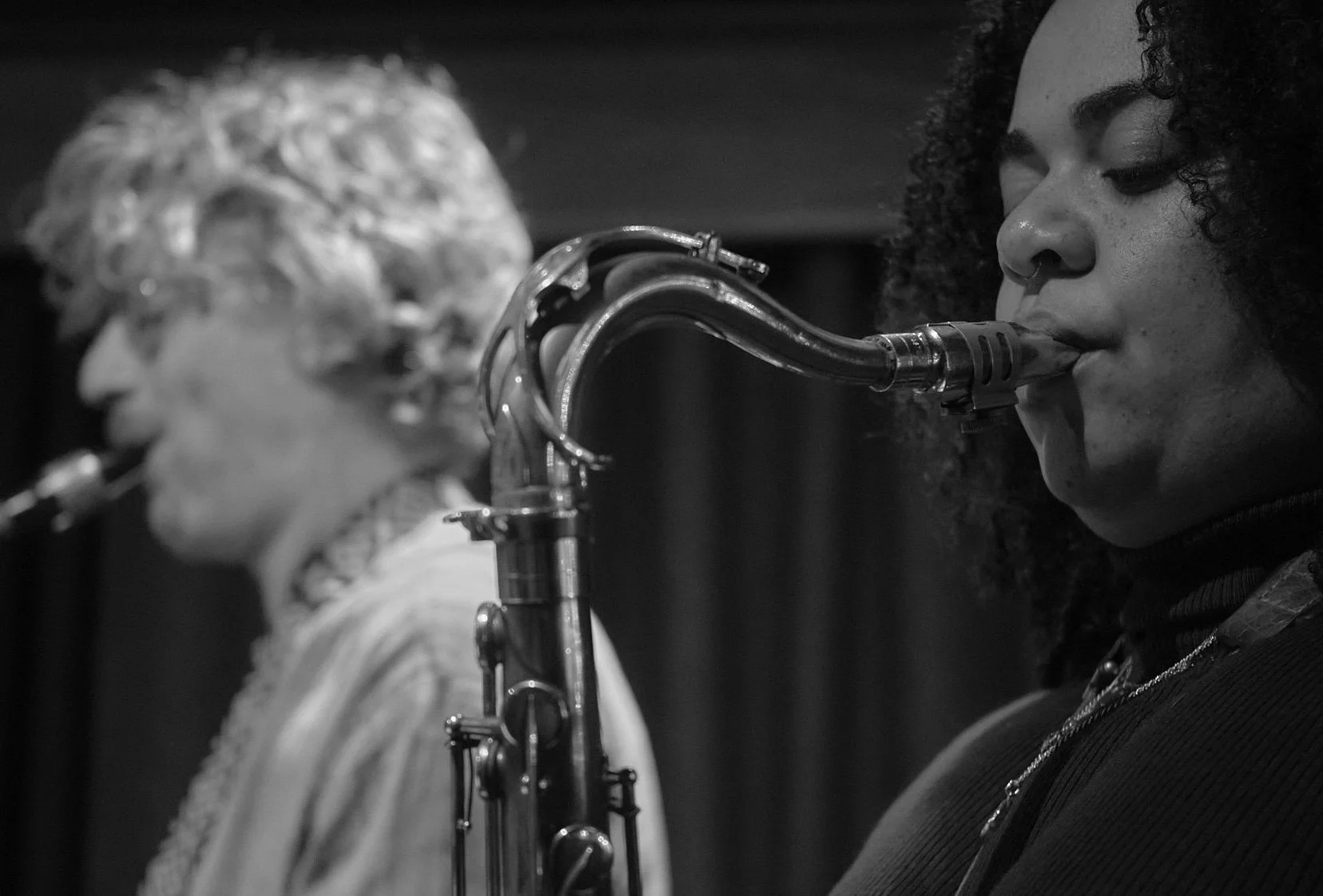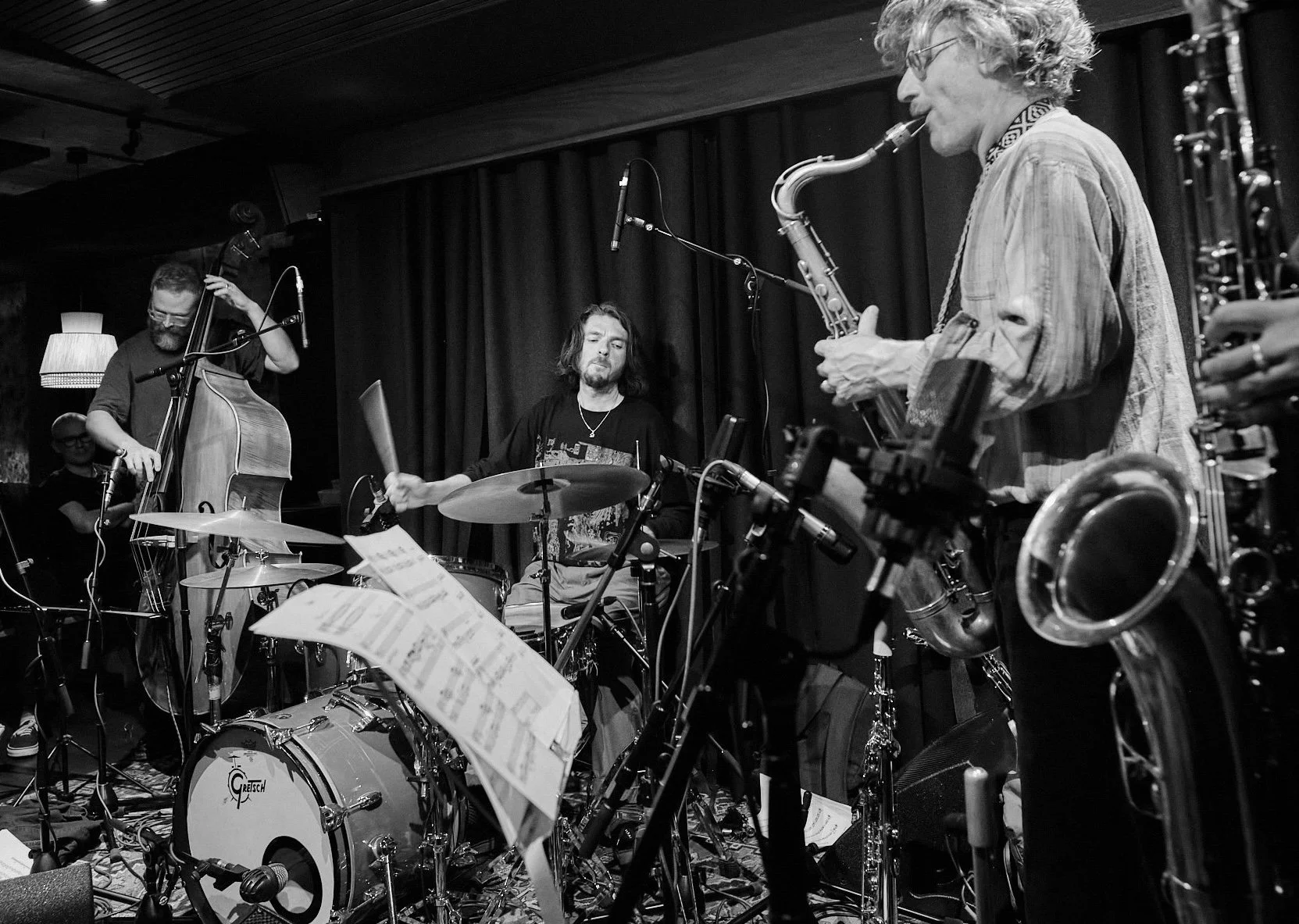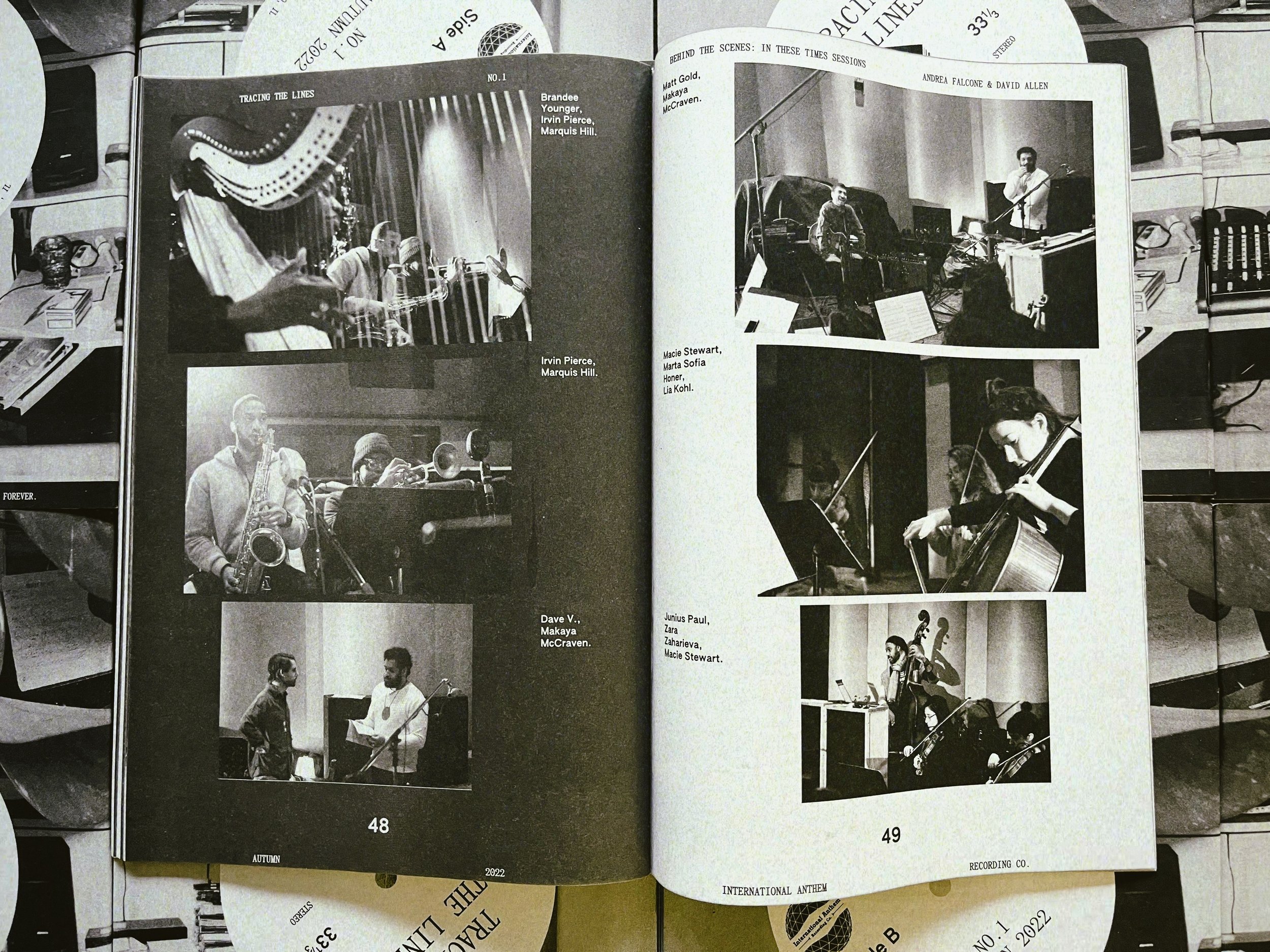Environments: Brilliant Corners, “mu”, and the Unquantifiable Extra Realm
Voices of Bishara album launch at “mu”, 7th May 2024.
by Tom Skinner
photos by André Baumecker
My last record was recorded live at “mu”, a bar and restaurant in Dalston, London—but we can’t really talk about that unless we talk about Brilliant Corners. My association with brothers Amit and Anish Patel all started at Brilliant Corners, the hi-fi bar and restaurant they opened in 2013, a decade before they opened “mu”. It’s the same for Shabaka, Tom Herbert, Dave Okumu, and Floating Points. All of us. Obviously, Brilliant Corners and “mu” are two different spaces, but they embody the same outlook and feeling as each other. They even seem to encourage a similar sound. Brilliant Corners is where it begins.
First and foremost, it’s a bar. A high-end bar where they serve really well curated drinks and where they’re preparing really fresh, beautiful Japanese food. They have an incredible four-way Klipsch audiophile sound system with a great set of decks, a rotary mixer, and all the rest. When I first started going there they would have DJs like Floating Points and Four Tet doing these under the radar parties. Those guys are big names, but they would go there and do afterhours sets. For fun, essentially. A nice meal and some drinks, maybe. All of that was mostly just through knowing Amit — and the thing with Amit is that he’s really passionate about the music. He’s passionate about jazz. He’s a record collector.
Bishara’s bombastic rhythmic section: Kareem Dayes on cello, Tom Herbert on bass, and Tom Skinner on drums.
Chelsea Carmichael doubles on flute with VOB.
My first encounter with Amit was the first time that I did Played Twice, which was one of the nights that he started at Brilliant Corners. I guess it was a logical step to invite musicians to come perform there, and I think the master stroke was to tie that in with the DJs, which already had an audience. That’s how Played Twice started. The idea of the night was that whichever musician had been invited to perform chose an album (typically from the “classic jazz” era, but it could be anything) and during the first half of the evening everybody would sit and listen to it. Just sit in silence and listen to the record on this beautiful sound system that they had. It was phones away, phones on silent, lights dimmed way down. It was a super moody atmosphere. Then, after a break, whoever had been invited to play that night would perform an interpretation of that album.
The first time I did it was with Shabaka, and we chose Alice Coltrane’s Ptah, the El Daoud. I did Sam Rivers’ Fuchsia Swing Song with Pete Wareham. I did Pharoah by Pharoah Sanders with Floating Points and Shabaka. The list goes on.
Eventually, I put together an installment of my own and chose Tony Williams’ Lifetime, and that night was the birth of the concept of my band, which is still going to this day. I saw it as an opportunity to deconstruct the music. I wanted to interpret this music which inspired me in an interesting way, and not just try to replay it in the way it sounded on the record in the first place. That was something that always intrigued me, and I’ve always been into the idea of remixing, but doing it with a live group. Rearranging pieces of music, or even just taking one small element of a piece and just playing that round and round, abstracting it even further, and seeing how far we can push this interpretation or reinterpretation. So that’s what we were doing at Brilliant Corners.
It wasn’t happening every week. It was on an ad hoc basis. We would do one and then Amit would say “okay, so who’s going to do one next?
Tom, what album are you going to pick?”
A sort of challenge, almost.
What do I want to do, and how do I want to do it?
I remember going down there when things started opening up again, after COVID had settled down, and Amit mentioned that they had bought a place down the road. “We’re going to open a restaurant,” he said. “I want to open a jazz club with live music every night.”
Wow. Okay, amazing.
Literally from day one, before he’d even gotten the keys, he was asking,
What do you need? What makes a good jazz club? How can I do this and make sure that you guys are happy?
I know he had similar conversations with other musicians as well. Consideration for the musicians was at the very top of the agenda, which made the whole thing a really exciting prospect. I donated a drum kit that I wasn’t really using to the club as a sort of show of good will. It’s important to have a house kit and it needs to be good. So it was a simple thing I could do, and now I know that when I go there to play I’m going to play a nice kit, and everyone else who plays there is also going to play a nice kit too. It’s handled.
The room sounds really good, acoustically. Of course, it’s a restaurant as well, so they have to deal with some audience noise. So you need some amplification for certain things, and after some upgrades as a result of feedback from the musicians, the PA is really great. They have a really great sound engineer who’s there every night making sure it sounds good, and also recording every single show that happens.
My group did two nights at “mu” in January 2023, which were eventually issued by International Anthem as Voices of Bishara Live at ‘mu’ [IARC0076]. I knew they were recording, but we didn’t go in there to make a record. For me, at that point, doing those shows was a way to further develop the music. I wanted to be able to try to push and pull the music into different directions. What is really so valuable about “mu” is that they provide a safe space for people like myself to be able to go in and play without too much pressure. Amit just lets us do whatever we want. It’s not can you play this in this way or can you play standards? It’s free reign.
Here’s the space. You do what you need to do.
Having a place like that in London, where we’re able to play, free of any kind of pressure or constraint, feels so important for the development of our music. It’s a very valuable thing that they’ve given us.
It’s also a sort of double-edged sword. Since “mu” opened its doors the struggle for them has been finding the balance between jazz club and restaurant. It’s quite hard to straddle that line, and at the end of the day it’s a business. So, along with the fact that it’s a space to do what we want musically, it is also a restaurant where there are a lot of people who aren’t necessarily there to hear the music, and that’s just part of it. So it can get noisy in there, and even on our record you can hear quite a lot of background noise, but that’s what makes it a bit more comfortable for me to play there. I’m not presenting this big show. We’re just doing a gig in this place, and it’s a restaurant, and you can come and watch if you like. If you’re just there for a nice night out, that’s fine as well. It kind of takes the pressure off. I’m not worrying too much about presenting some polished, finished piece. We’re just going to do our thing, and that’s what was attractive to me about the venue as a place to go and explore the material.
At that point we had done a couple of gigs as a band, but we weren’t playing in the way that, in my mind, I wanted it to be. I didn’t want to worry about time, essentially. I wanted to let the music tell us when we needed to move on to the next thing. To just play the music to let each part be however long it was going to be. To stretch everything out, drastically. That’s why we did two nights in a row, to try and get into that zone. I could hear it when I listened back to the recording. Yeah, this is it. This is how I want it to be. Open-ended and loose and irrespective of time.
That’s what was so great for us as a group and for me as a composer: simply to not have to worry about those things and to just play. That’s why I’m so pleased with and why I’m so proud of that recording. It really is a document of us doing that, of us getting into that zone that we had been searching for.
I guess it’s about environment, isn’t it?
I always go on about Rob Mazurek’s Alternate Moon Cycles [IARC0001]. I love that record and I love the fact that it’s recorded in a bar where you can hear people clinking glasses. It’s this beautiful ambient piece, but the recording of it has its own ambience. A lot of International Anthem releases are recorded in these kinds of spaces or in similarly unconventional ways, and I find it really interesting and sometimes necessary, especially for jazz music, to take it out of the concert hall and to put it into all sorts of different spaces. Outdoors, in the street, or whatever. At that point
I think you’re capturing something more than just the music. It becomes more like a field recording, which brings another level of depth to it.
In the case of somebody like Alan Lomax — he is capturing the music, but he is also capturing the environment of where a person is living, or of somewhere that is somehow significant to them, and that’s why he has met them at that place. Those recordings are actual documents that are really important. It adds a kind of unquantifiable extra realm to the music. You can almost touch it. It’s been made tangible, somehow.
That’s how I feel about the recordings from “mu”.
Tracing The Lines is a creative exploration of International Anthem Recording Co. and the community that surrounds it.
Order print copies

